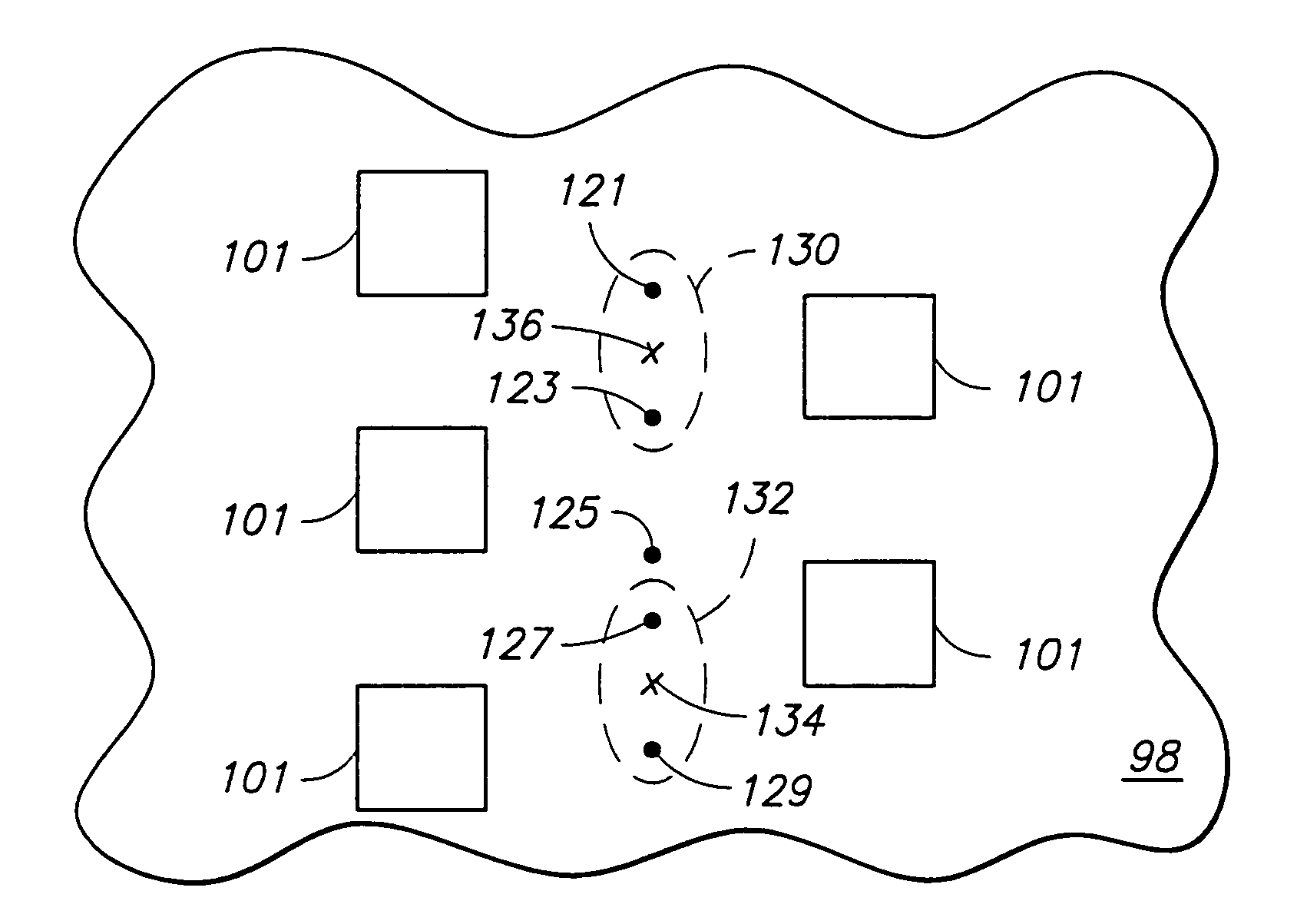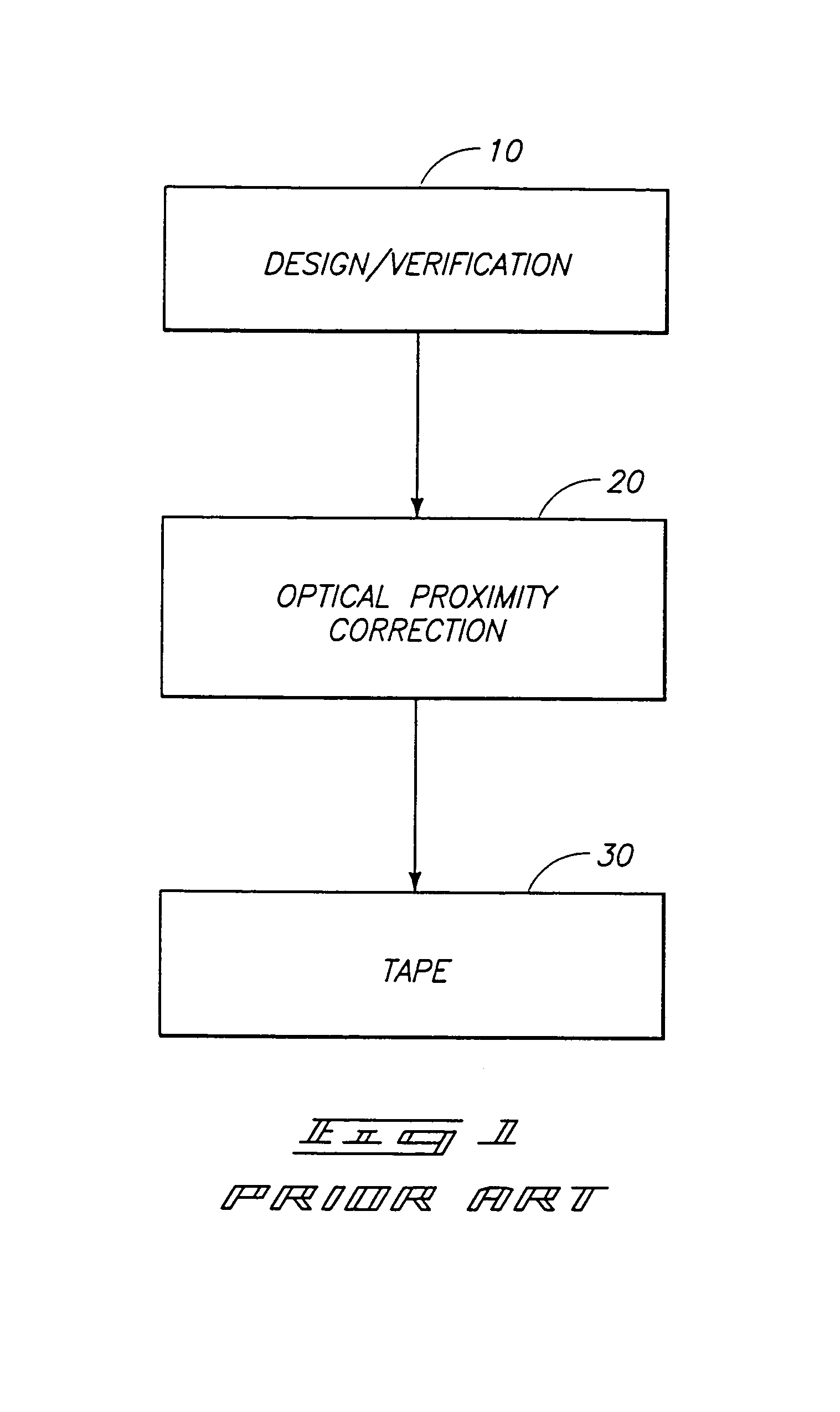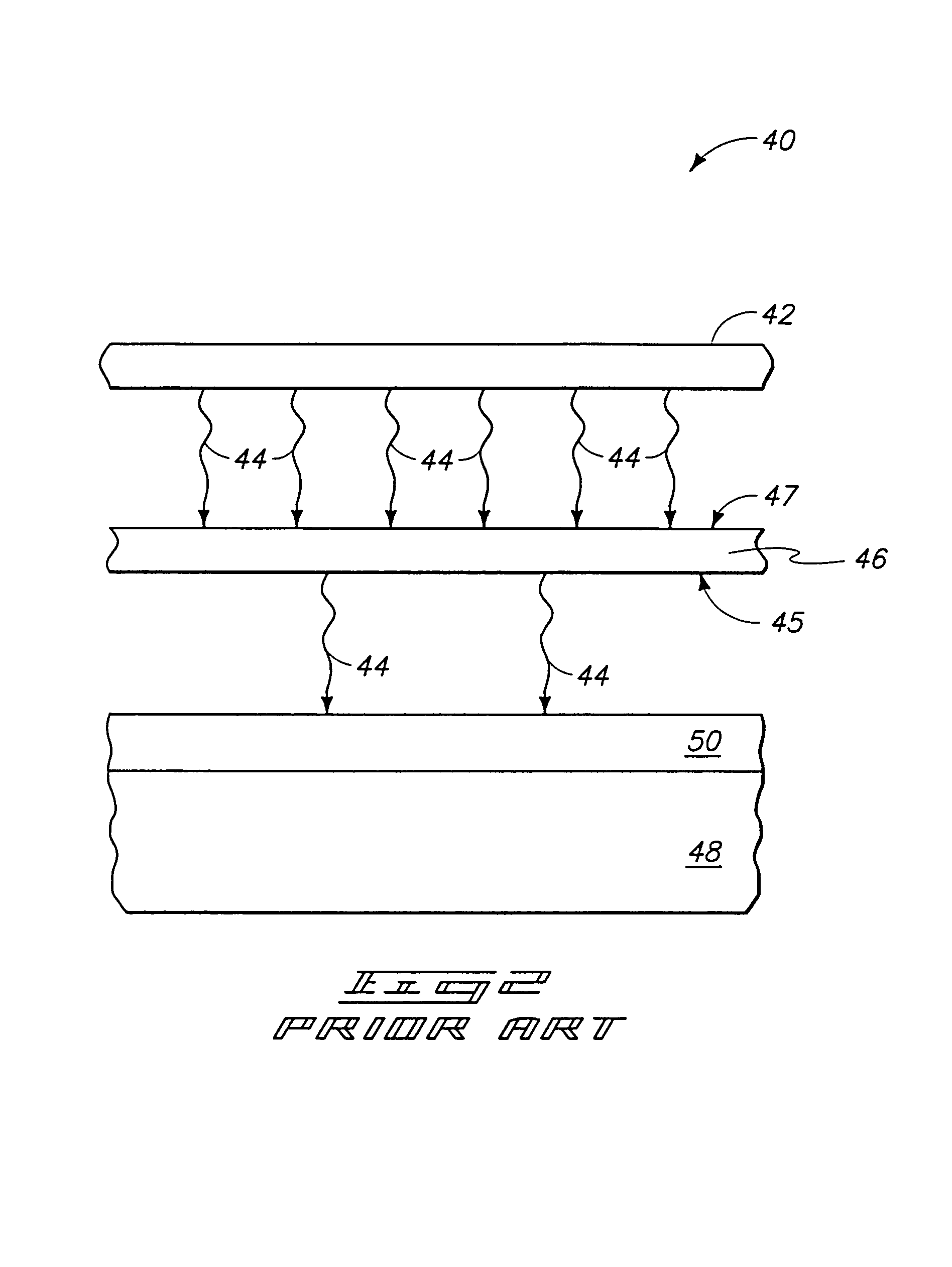Methods of forming radiation-patterning tools; carrier waves and computer readable media
a technology of radiation patterning and tooling, applied in the field of method of forming radiation patterning tools, can solve the problems of affecting the effect of a single window, affecting the quality of the printed feature, and affecting the effect of the forming of the tool,
- Summary
- Abstract
- Description
- Claims
- Application Information
AI Technical Summary
Benefits of technology
Problems solved by technology
Method used
Image
Examples
Embodiment Construction
[0048]The invention includes new methodology which can be quick, efficient and accurate for determining placement of sidelobe inhibitors on radiation-patterning tools. In particular aspects, the methodology assumes that contacts will be adjacent before significant sidelobes develop. This assumption can be utilized in a heuristic routine using Design Rule Checks (DRC) in order to determine the location of the sidelobes. Methodology of the present invention can account for all of the two, three or four interaction contact scenarios of radiation-patterning tool design, and can significantly reduce the placement time of sidelobe inhibitors relative to methods which simulate light patterns passing through a radiation-patterning tool in order to determine regions of undesired sidelobe interaction. Methodology of the present invention can be used for any pitch between contacts, and can be utilized with a high degree of speed and accuracy. A method of the present invention can be utilized t...
PUM
| Property | Measurement | Unit |
|---|---|---|
| threshold spatial distance | aaaaa | aaaaa |
| threshold distance | aaaaa | aaaaa |
| threshold spatial distance | aaaaa | aaaaa |
Abstract
Description
Claims
Application Information
 Login to View More
Login to View More - R&D
- Intellectual Property
- Life Sciences
- Materials
- Tech Scout
- Unparalleled Data Quality
- Higher Quality Content
- 60% Fewer Hallucinations
Browse by: Latest US Patents, China's latest patents, Technical Efficacy Thesaurus, Application Domain, Technology Topic, Popular Technical Reports.
© 2025 PatSnap. All rights reserved.Legal|Privacy policy|Modern Slavery Act Transparency Statement|Sitemap|About US| Contact US: help@patsnap.com



